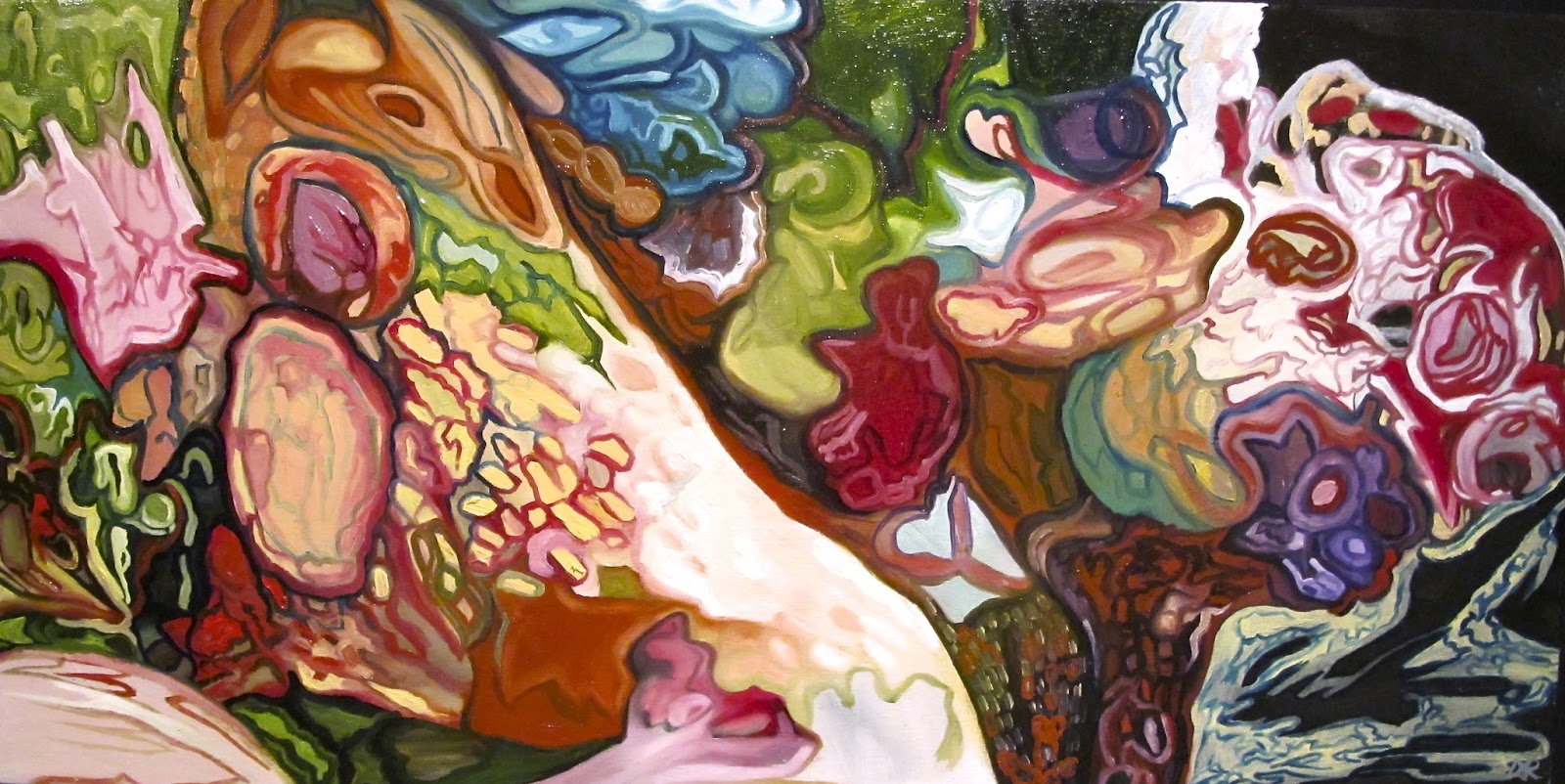Doris Rose, moved from England to Canada when she was nine-years-old
and settled down in Toronto. Doris comes from a family of academics with interests that lie on the
opposite sides of the academic spectrum. She was always interested in
drawing human figures and studying for a Drawing and Painting major at Ontario College
of Art and Design University (OCADU) helped her polish her talent to
precision.
Even though Doris knew how to draw, she still wanted technical
training in the field of fine arts. She always thought of art as her life’s
course and signed up for Avenue Art School outside of school and got her hands
wet.
 |
| In The Bath |
Her time at OCADU gave her the chance to work on her technique.
Lorne Teows, a professor at OCADU, proved to be a great influence. The university also
exposed her to a number of other aspiring artists, and she believes simply
interacting with the students at OCADU was an eye-opening experience.
 |
| The Cyclist |
“Everybody
has their own style, their own process and thinking. So even just watching and
speaking with other artists influenced my style.”
After she graduated from school, she put together a series studying values and how people value things. She would have people choose one material object they value the most, and then she draws her inspiration from the stories behind their choice of the object. Capturing their interaction with the valued material object gives her a complete picture of the personality she is projecting on the canvas.
 |
| The Dreamers |
She took a lot of painting classes in realism, but during one
summer she took an abstract painting class for extra credit and ended up using
the brush strokes she developed in that class in her thesis. It helped her evolve her style. Abstract expressionism gave her more technical freedom. What she is painting now is styled after abstract expressionism, and she
considers it more of a challenge.
“I like to
paint things that I can piece together.”
 |
| The Organics #1 Water Scene |
She uses technical elements from abstract expressionism and
mixes them with realism to create a perfect crossover painting, but she defines
her style as impressionistic.
“What is
important to me is the story that you’re telling as compared to why you paint.
I’ve always been inspired by certain impressionists. Especially the brush
strokes Van Gogh used.”
 |
| Waiting for Inspiration |
She says that Van Gogh captures “humanity” like no other. She
believes that brush strokes are essential in telling the complete story: They
are the life of the painting. They give character, depth, and emotion to the
painting. She likes to capture the depth that people have and the
contradictions displayed in their behaviour.
 |
| The Organics #3 The Cube |
In Doris’s work we are able to see the thesis of a person’s life
experiences: What they have experienced and what has made them who they are
today. Going back into people’s lives gives her work richness and depth.
 |
| The Organics #4 Petals |
“I think
you can’t help but be inspired by other people and other artists. Jenny
Seville was an influence on me; she’s technically amazing. Lucien Freud, as a
painter, is amazing.”
 |
| The Organics #5 Microscopic |
Psychology has always found its way into her paintings. During a finger
painting task in grade school, describing what she had done over the weekend, her subconscious translated her weekend's experience into a huge painting of
flames. Even though this happened years ago, what Doris paints now always has
an introspective element.
 |
| The Organics #6 Electricity |
“I like to capture those moments of quiet when people are internalizing, the silent moments, when you’re just quiet and thoughtful, if you combine that with dreams, I believe dreams are when you’re most introspective.”
Doris has expanded her artistic talents to writing and
illustrating poems for children. She aspires to put them together into a book
one day. Her current series is called ‘The Organics.’ It focusses on
shapes and patterns found in the most basic and microscopic things we can see.
“My sister is a chemical engineer, through her and her
work I learned about molecular artwork and cell engineering. Images taken of microscopic projections from
our body are similar to pictures of the Earth taken from outer space. These
fundamental shapes, patterns, and colours seem to make up every layer of our
universe, and that interests me.”
 |
| The Organics #7 Sinew |


No comments:
Post a Comment